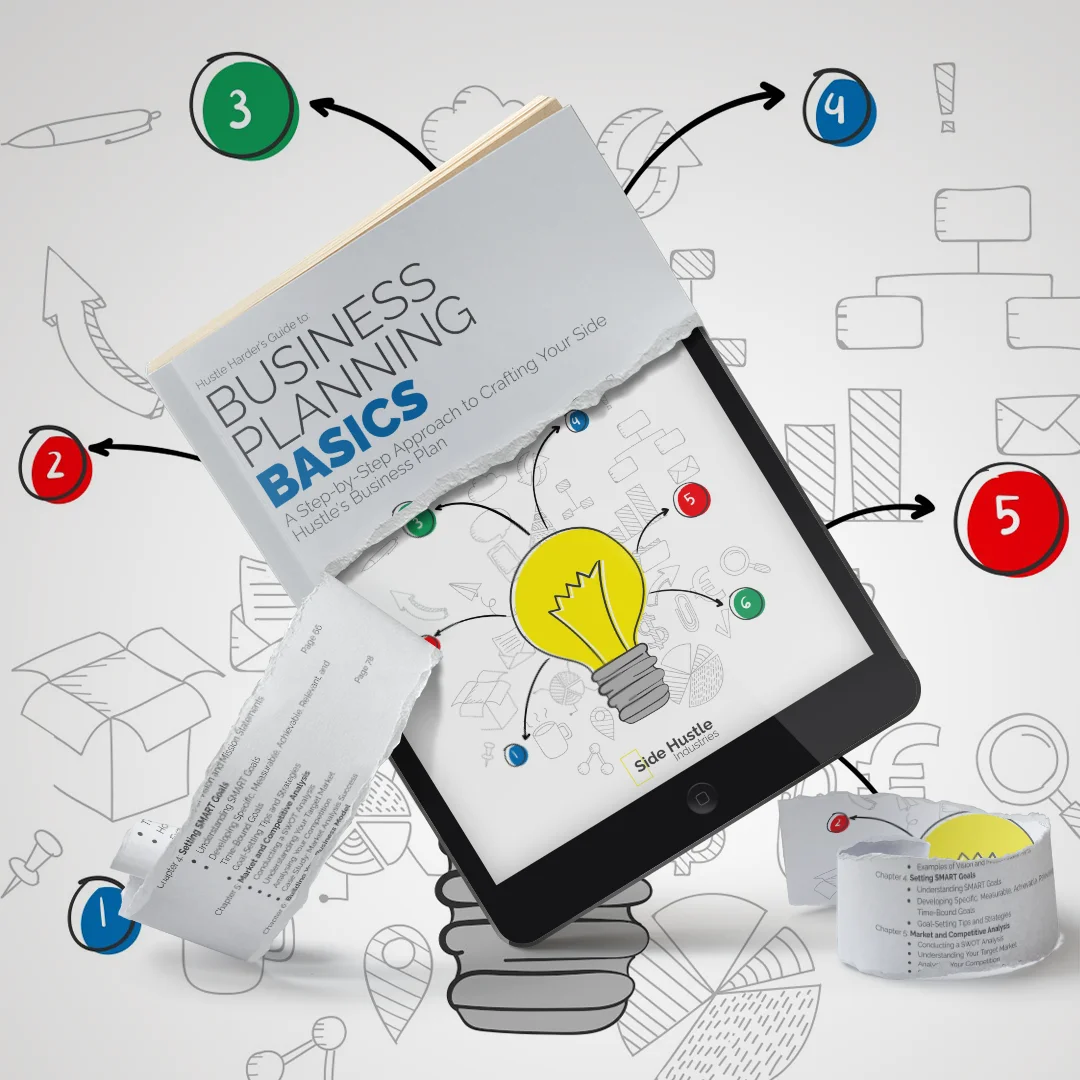
In the entrepreneurial world, identifying your niche is akin to finding your North Star. Your niche defines the unique space your business will occupy in the market, enabling you to distinguish yourself from competitors and cater to a specific audience. It’s a strategic move that sets the foundation for your side hustle’s success. In this blog, we will explore the significance of finding your niche, guide you through the process of niche identification, and offer insights into how a well-defined niche can become your key to unlocking the full potential of your entrepreneurial journey.
The Importance of Niche Identification
1. Differentiation:
The market is a crowded place, with many businesses offering similar products or services. Identifying your niche allows you to differentiate yourself from competitors. It’s your unique selling proposition (USP) that sets you apart and gives customers a reason to choose your business.
2. Relevance:
Your niche defines who your target audience is. By understanding your niche, you can tailor your offerings to meet their specific needs, ensuring that what you provide is relevant and valuable to them.
3. Efficiency:
Niche marketing can be more cost-effective and efficient. You’re not wasting resources trying to reach a broad and diverse market. Instead, you focus your efforts on a select group of potential customers who are more likely to engage with your business.
4. Passion and Expertise:
Operating within your niche allows you to leverage your passion and expertise. When you’re deeply interested and knowledgeable about your niche, you’re more likely to excel in your business.
5. Market Dominance:
When you occupy a specific niche, you have the opportunity to become a dominant player in that space. This can lead to greater market influence and higher customer trust.
6. Adaptability:
Your niche serves as a solid foundation that allows you to adapt to changes and challenges in the market. It’s easier to pivot or evolve your business when you have a clear niche.
The Process of Niche Identification
Identifying your niche is not a hasty decision. It requires careful consideration, research, and self-reflection. Here’s a step-by-step process to help you find your niche:
1. Self-Reflection:
Start by looking inward. Consider your passions, interests, and expertise. What are you genuinely passionate about? What are your hobbies? What do you excel at? Your niche should align with your own interests and skills.
2. Market Research:
Investigate the market to identify gaps, underserved needs, or unmet demands. Look for opportunities where you can provide value. Use market research tools, surveys, or industry reports to gather data.
3. Competitor Analysis:
Examine your competitors and their niches. Determine what they offer, who their customers are, and what sets them apart. This can help you identify opportunities to differentiate your business.
4. Customer Profiling:
Create detailed customer profiles for your target audience. Understand their demographics, psychographics, behaviours, and pain points. This information will guide your niche selection.
(See Hustle Harder’s Guide to: BUYER PERSONAS – A Comprehensive Guide to Creating Effective Buyer Personas for Your Side Hustle.)
5. Unique Value Proposition (UVP):
Craft your UVP, a concise statement that communicates the unique value your business brings to your niche. Your UVP should answer the question, “Why should customers choose your business?”
6. Testing and Validation:
Before committing fully, test your niche by offering your product or service to a small group of potential customers. Gather feedback and assess the demand. Make adjustments as necessary.
7. Final Niche Selection:
Based on your self-reflection, market research, competitor analysis, customer profiling, UVP, and testing, make your final niche selection. This should be a well-informed decision aligned with your goals and resources.

Real-Life Example: Niche Identification
Let’s consider a practical example of how niche identification might unfold:
Self-Reflection:
You have a passion for fitness, and you’ve always excelled in helping friends and family with their workout routines and nutrition plans. You’re also enthusiastic about eco-friendly practices and sustainability.
Market Research:
You notice that there’s growing interest in sustainable living and eco-conscious choices. The fitness industry, however, often produces a lot of waste, with disposable equipment and unsustainable practices.
Competitor Analysis:
Existing fitness businesses in your area primarily focus on traditional gym memberships and personal training without a strong emphasis on eco-friendly practices.
Customer Profiling:
Your ideal customers are environmentally conscious individuals who care about their health and the planet. They appreciate sustainable products and services.
Unique Value Proposition (UVP):
Your UVP is “EcoFit: Sustainable Fitness Solutions.” You offer fitness programs and equipment that are environmentally friendly and promote eco-conscious choices. Your services cater to those who want to stay fit while minimising their environmental footprint.
Testing and Validation:
You decide to launch a series of outdoor group fitness classes that use eco-friendly equipment made from recycled materials. Your initial classes receive positive feedback, and participants express enthusiasm for your sustainable approach to fitness.
Final Niche Selection:
Your final niche is “Eco-conscious fitness enthusiasts.” You’ve successfully combined your passion for fitness with your commitment to sustainability, creating a unique and marketable niche.
By following this process, you’ve identified a niche that aligns with your interests, addresses market demands, and sets you apart from traditional fitness businesses.
Finding Your Micro-Niche
In some cases, it’s beneficial to take niche identification a step further and define a micro-niche. A micro-niche is an even more specialised segment of a broader niche. The advantage of a micro-niche is that it allows you to serve an extremely targeted audience with very specific needs. This can make you a go-to expert and create a strong customer base. Here’s how to find your micro-niche:
1. Analyse Your Niche:
Start with your niche and analyse it further. What specific subgroups or niches exist within your chosen niche?
2. Customer Profiling (Micro-Level):
Create detailed customer profiles at a micro-level. Understand the unique needs, preferences, and challenges of this subgroup.
3. Unique Value Proposition (Micro-UVP):
Develop a micro-UVP tailored to this subgroup. What unique value can you provide that directly addresses their specific needs?

Real-Life Example: Micro-Niche Identification
Taking our previous example of “Eco-conscious fitness enthusiasts,” let’s say you identify a subgroup with a particular interest in outdoor activities and nature conservation. You create a micro-niche within this larger niche.
Analyse Your Niche:
You recognize that a subgroup within your niche has a strong interest in outdoor activities, such as hiking and camping, and they are passionate about preserving natural environments.
Customer Profiling (Micro-Level):
You profile these individuals further, finding that they are avid hikers and campers who want to stay fit while minimising their environmental impact. They’re specifically looking for fitness programs that cater to outdoor enthusiasts.
Unique Value Proposition (Micro-UVP):
Your micro-UVP is “WildFit: Outdoor Fitness for Nature Lovers.” You offer specialised fitness programs that focus on exercises relevant to hiking and camping, along with tips for reducing one’s environmental footprint in outdoor activities.
By defining this micro-niche, you’ve narrowed your focus even further, making your fitness business even more appealing to a specific and passionate subgroup.
Staying Flexible and Adaptive
While niche identification is essential, it’s also crucial to remain flexible and adaptive in your entrepreneurial journey. The market can change, customer preferences can evolve, and unexpected challenges may arise. Your niche, while foundational, should not be set in stone.
Be open to reevaluating your niche when necessary and consider whether adjustments or expansions are needed. Entrepreneurship often involves a degree of experimentation and learning from feedback. This adaptability can be a key asset as you grow your side hustle.
Identifying your niche is a pivotal decision in your entrepreneurial journey. It shapes your brand, defines your target audience, and differentiates your business from competitors. By following a deliberate process of self-reflection, market research, competitor analysis, customer profiling, UVP creation, and validation, you can find a niche that aligns with your interests and market demands. You may even choose to explore micro-niches to further specialise and cater to highly specific audiences. Keep in mind that while your niche serves as a foundation, it should also allow for flexibility and adaptation as you navigate the dynamic world of entrepreneurship. With a well-defined niche, you’re on your way to establishing a business that resonates with a specific and loyal customer base, increasing your chances of success.

*Also available on Amazon in Kindle, Soft Cover & Hard Cover formats. —> Click Here.
